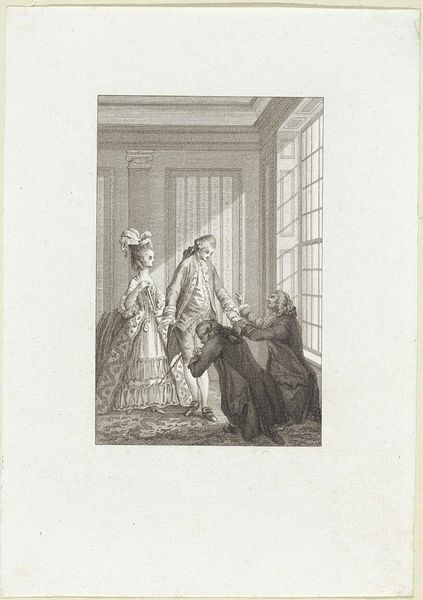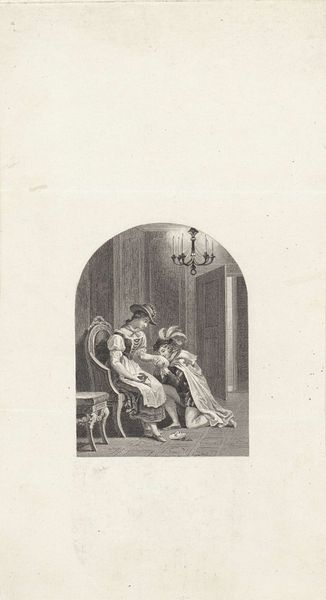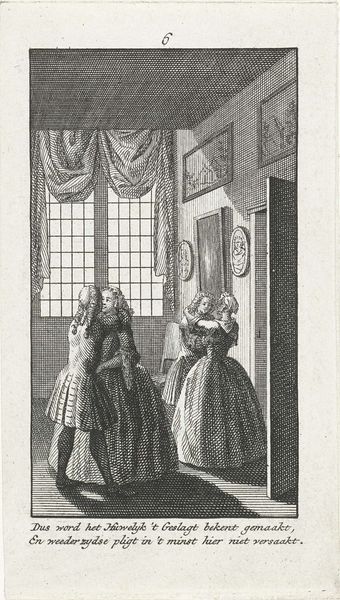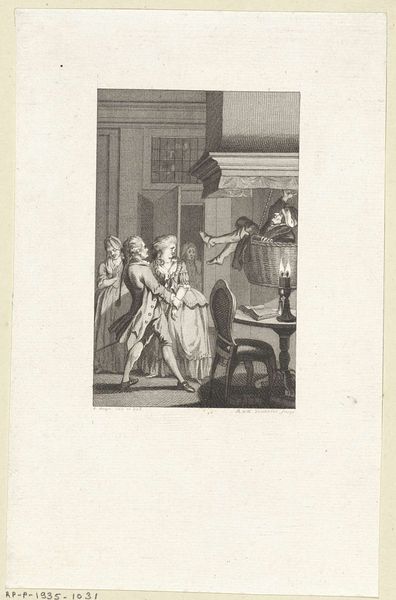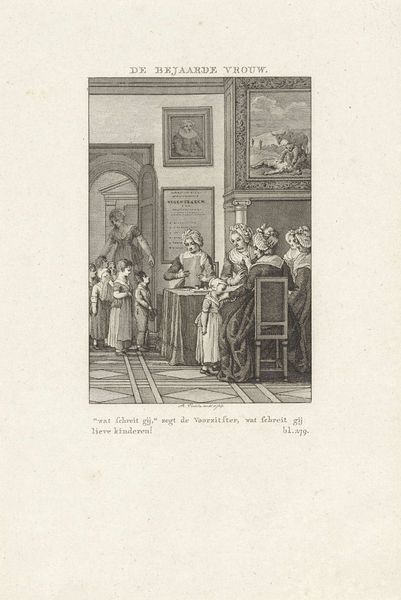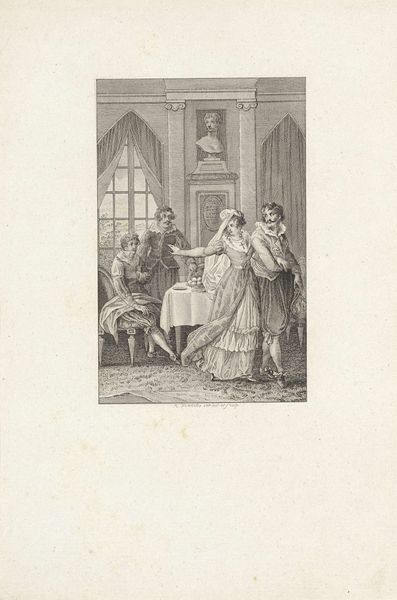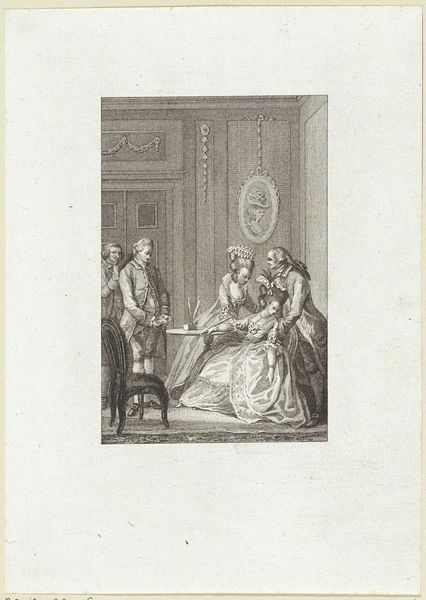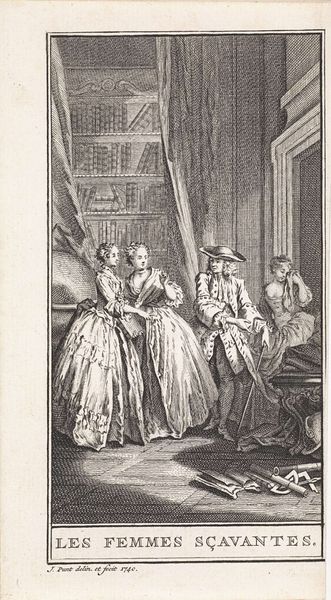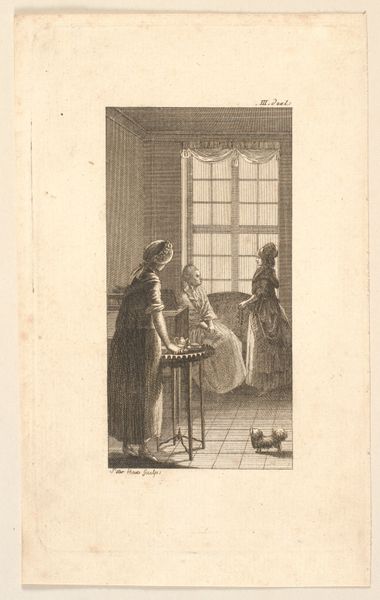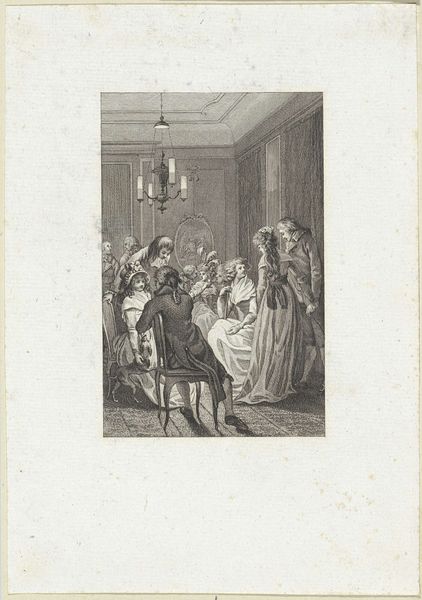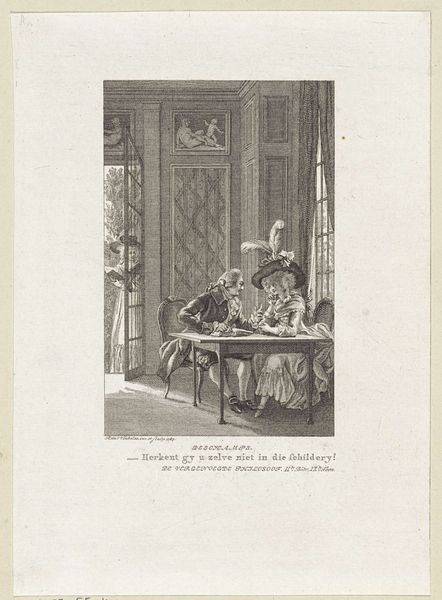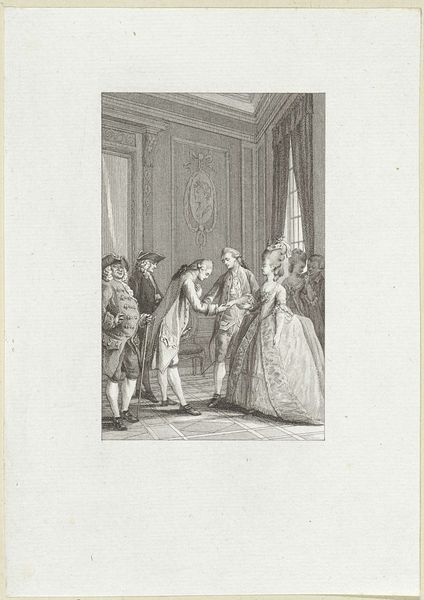
Dimensions: height 208 mm, width 147 mm
Copyright: Rijks Museum: Open Domain
Editor: Here we have Reinier Vinkeles's 1780 engraving, "Man verscheurt een brief terwijl een vrouw toekijkt," or, "Man tearing a letter while a woman watches." The scene is intimate, perhaps tense. What kind of story do you think Vinkeles is trying to tell? Curator: That's a fantastic starting point. Given the late 18th-century setting, it's vital to consider the socio-political context. Etchings like this were often used to circulate ideas. The act of tearing the letter becomes significant. Is this a gesture of defiance against societal expectations or perhaps a severing of ties dictated by familial or political arrangements? How do the gazes of the figures interplay with themes of agency, obligation, and resistance within that specific time period? Editor: The woman's gaze does seem charged. It almost looks like she’s silently judging him. Curator: Exactly. Consider the limited power and autonomy afforded to women. The woman's observation and implied judgment highlight gender dynamics within relationships. Her gaze, in that power imbalance, embodies a quiet form of resistance. What is she resisting by not acting? Is she complicit or constrained? The torn letter then symbolizes more than just a personal rejection, right? Editor: You’re right, it complicates the narrative, doesn’t it? Maybe it’s a broader commentary on class or societal constraint. Curator: Precisely! Reflecting on the rise of the bourgeoisie, where personal emotions began to challenge established norms, adds a layer. So how might we view the ripped letter in this context of evolving social structures and shifting identities? Editor: I hadn't considered the rise of the bourgeoisie at all. That really opens up the possible meanings of this piece. Thanks! Curator: And thank you. By situating this artwork within broader narratives of gender, class, and resistance, we unveil the profound power dynamics embedded within such seemingly simple scenes.
Comments
No comments
Be the first to comment and join the conversation on the ultimate creative platform.
